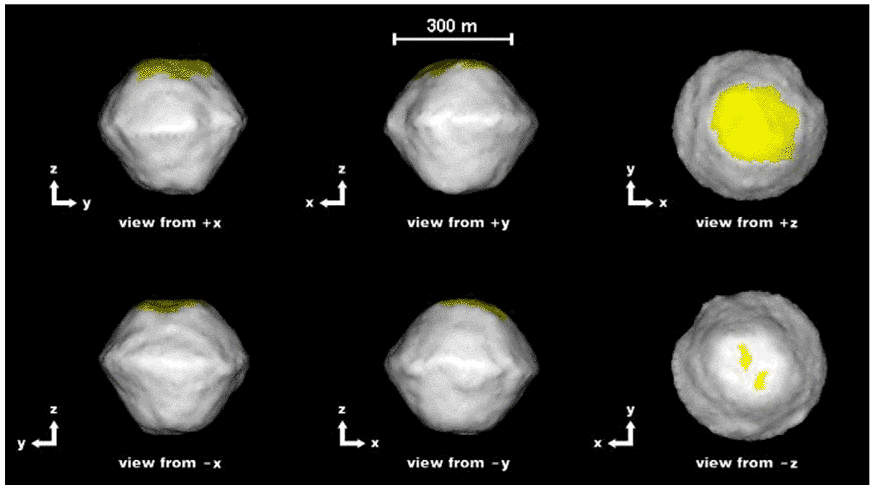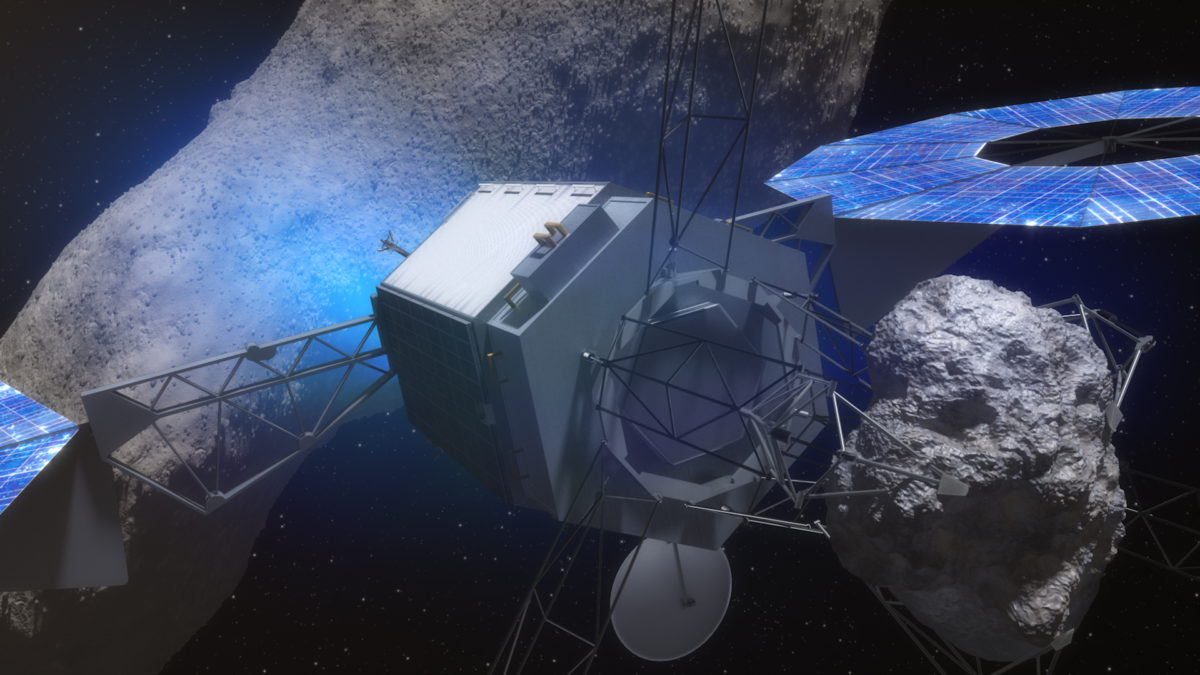Jason Davis • Mar 25, 2015
Meet NASA's Winning Asteroid Redirect Spacecraft, and the Asteroid It May Visit
NASA has decided to pluck a small boulder off a large asteroid instead of bagging an entire asteroid outright, the agency announced Wednesday. The selection of so-called Option B refines the look of the Asteroid Redirect Mission, a plan to capture part of a near-Earth asteroid and return it to lunar orbit, where it will be visited by astronauts in late 2025.
The news ends months of speculation that included a no-decision announcement last December. During a conference call, NASA Associate Administrator Robert Lightfoot said the boulder return option was less risky in terms of target selection, and would allow the agency to try out more technologies applicable to future missions.
"Option B—in my opinion, as the chair of the meeting—was the better option," said Lightfoot, describing his participation in a Mission Concept Review that eliminated Option A, in which a spacecraft would deploy a 10-meter bag to snare an entire asteroid. "We know larger asteroids have boulders on the surface. When I get there, I'll have an opportunity—with the sensor suite we’re going to put on here—to assess and check those boulders out. I’m going to have multiple targets to go after, is what it boils down to,” he said.
NASA Asteroid Redirect Mission concept In this video, the Asteroid Redirect Mission spacecraft visits a large asteroid and retrieves a 3-meter boulder from the surface. The asteroid depicted in this video, Itokawa, is no longer the leading candidate for the mission.Video: NASA
The mission has a tentative launch date of December 2020. While NASA officials say they don't need to select a target asteroid until 2019, the current short list is Itokawa, Bennu and yet-unnamed 2008 EV5. Itokawa was visited by Japan’s Hayabusa spacecraft in 2005, and Bennu is the target of NASA's upcoming OSIRIS-REx sample return mission. 2008 EV5, said Lightfoot, is the current front-runner.
EV5 was discovered in 2008 by the Catalina Sky Survey, near Tucson, Ariz. The asteroid’s leading expert is Dr. Michael Busch, a research scientist at the Mountain View, Calif.-based SETI Institute. Busch authored a 2011 paper characterizing EV5 using planetary radar observations taken from Arecibo Observatory and NASA's Deep Space Network radar dish in Goldstone, Calif.
Busch said EV5 is an ideal candidate for the ARM spacecraft, which needs to visit an asteroid with pluckable 3-meter surface boulders. When Busch’s team zapped EV5 with planetary radar, they were able to detect boulders as small as 7.5 meters, as well as tiny cobblestones. This indicates there should also be in-between-sized boulders. "We can’t see the 3-meter rocks, but we know that they should be there," he said.
EV5 has a diameter of roughly 400 meters. It appears to have a ridge bisecting its surface, with a large chunk knocked out of one side. When asked how he felt about the prospect of a spacecraft visiting the asteroid that became the basis of his CalTech thesis, he said: "I’d love to know how accurate my shape models are."

The orbit of EV5 is roughly that of Earth’s, differing by just one-fifteenth of a year. Its last flyby was 2008, so it won’t be back until 2023 or 2024. If the ARM spacecraft departed for EV5 in late 2020, it could spend anywhere from 215 to 400 days in orbit—including time to grab a boulder. As EV5 approached Earth, the ARM spacecraft would slip back into the Earth-moon system, eventually ending up in lunar distant retrograde orbit, or DRO.
The crewed portion of ARM wouldn’t occur until 2025. An Orion spacecraft would be sent to lunar DRO via the Space Launch System. Orion would dock with the capture spacecraft, allowing a two-person EVA crew to inspect the boulder and collect samples. The mission would last about 25 days.
NASA's first SLS-Orion flight, Exploration Mission 1, is scheduled for no later than November 2018. EM-2, the first crewed flight, is expected in 2021. In the past, NASA has said SLS should begin flying once per year after EM-2. But with the crewed asteroid mission not slated until 2025, it isn't clear what else might fill the SLS manifest.

The ARM spacecraft's cost cap, Lightfoot said, remains $1.25 billion—not including the launch vehicle. Funding for ARM is currently scattered between multiple NASA programs.
"I think there will be some (funding) increase that is specific to the mission," he said. "We will take advantage of solar electric propulsion, which is estimated roughly at $300 million, which is already in the runout for space technologies. There's some capture technique mecahnisms that were already in parts of the human exploration budget."
Will ARM be officially stamped into next year's budget request? "I hope so. That's my plan," he said.
While the main goal of ARM is demonstrating technologies useful for deep space human exploration missions, there are also expected to be science benefits. In addition to a sample return, the target asteroid will be mapped, and the captured boulder will be characterized by instruments aboard the ARM spacecraft. "There’s some cool science that we’ll get out of it," said Busch.
Alessondra Springmann, a graduate researcher for the OSIRIS-REx mission, said ARM also demonstrates the importance of planetary radar. In particular, Arecibo Observatory, where she once worked, is unique in its ability to team up with other dishes like Goldstone to characterize asteroids. And unlike Goldstone, Arecibo doesn't have to compete for scheduling time with NASA's Deep Space Network. However, the observatory has recently struggled to stay funded.
"Radar bridges the gap between optical observatories and space missions," Springmann said. "There’s no other way to see boulders on the surface of an asteroid."
Support our core enterprises
Your support powers our mission to explore worlds, find life, and defend Earth. You make all the difference when you make a gift. Give today!
Donate

 Explore Worlds
Explore Worlds Find Life
Find Life Defend Earth
Defend Earth

